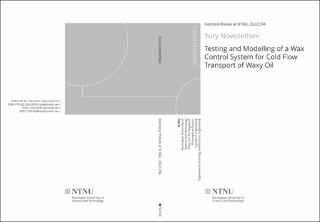| dc.description.abstract | There are no economical ways to tie back subsea waxy oil fields with distances to shore more than 50 km without treating the fluid on a platform or FPSO. For more considerable distances, solutions like heating could be too expensive. In the case of Arctic regions, it may not be possible to install a production facility at sea level at all due to iceberg or icing conditions rendering the development of such fields questionable. Subsea 7 is developing a fully subsea solution for treating well fluid and sending it onshore. The solution enables the development of Arctic fields. Part of this subsea facility is a system for treating wax. The idea is to make a cooling loop that cools the oil to the ambient temperatures and then sends this cold fluid into the export pipeline. This fluid flow at ambient temperatures is called "cold flow." Wax does not deposit at pipeline walls at the same temperature as the fluid. However, wax deposition is expected inside the cooling loop, and pigging the loop is seen as a solution to the wax build-up. A pig circulates inside the loop until it is worn and then is sent for cleaning the export pipeline as its last mission. Initially, this wax control system (WCS) was planned to be working with multiphase flows. However, it was decided to run WCS with single-phase flow as it was found to be impractical to operate WCS in multiphase conditions. This Ph.D. work follows the development of the WCS. It goes from a pilot experiment of checking the feasibility of a constant pigging inside a loop under single-phase conditions without an active control system, continues to experiments with bypass pigging and wax deposition in multiphase conditions, then concludes with a mathematical model for wax deposition tailored for WCS conditions. The main results of the Ph.D. work are:
• Experimental data on bypass pigging in multi-phase flow.
• Decision to construct WCS operating in single-phase flow both due to pigging control and wax deposition predictability.
• Simulator program of wax deposition inside the WCS. The program can be used for the design of a WCS.
• WCS qualification scale rig testing according to Norwegian DNV (Det Norsk Veritas) regulations. The test showed that the system is ready for implementation in an oil field.
Supplementary material
https://1drv.ms/f/s!AvXanuNP82zXo89VNuhTl5WLUh7mUg | en_US |
